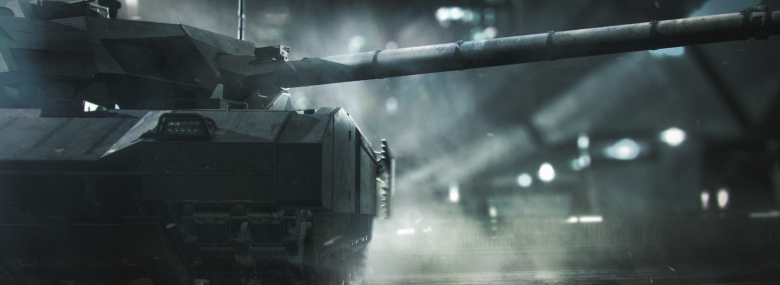
Commanders!
Last week we introduced the Puma, a German Tier 10 Premium coming in the next Battle Path. We also mentioned the Puma would be the middle prize (available for reaching Level 31 of 50 for that matter). And today, we’d like to tell you about the vehicle that’ll be available as the Battle Path’s first prize (for reaching Level 20) – the Boxer CRV Tier 9 Premium Armored Fighting Vehicle.
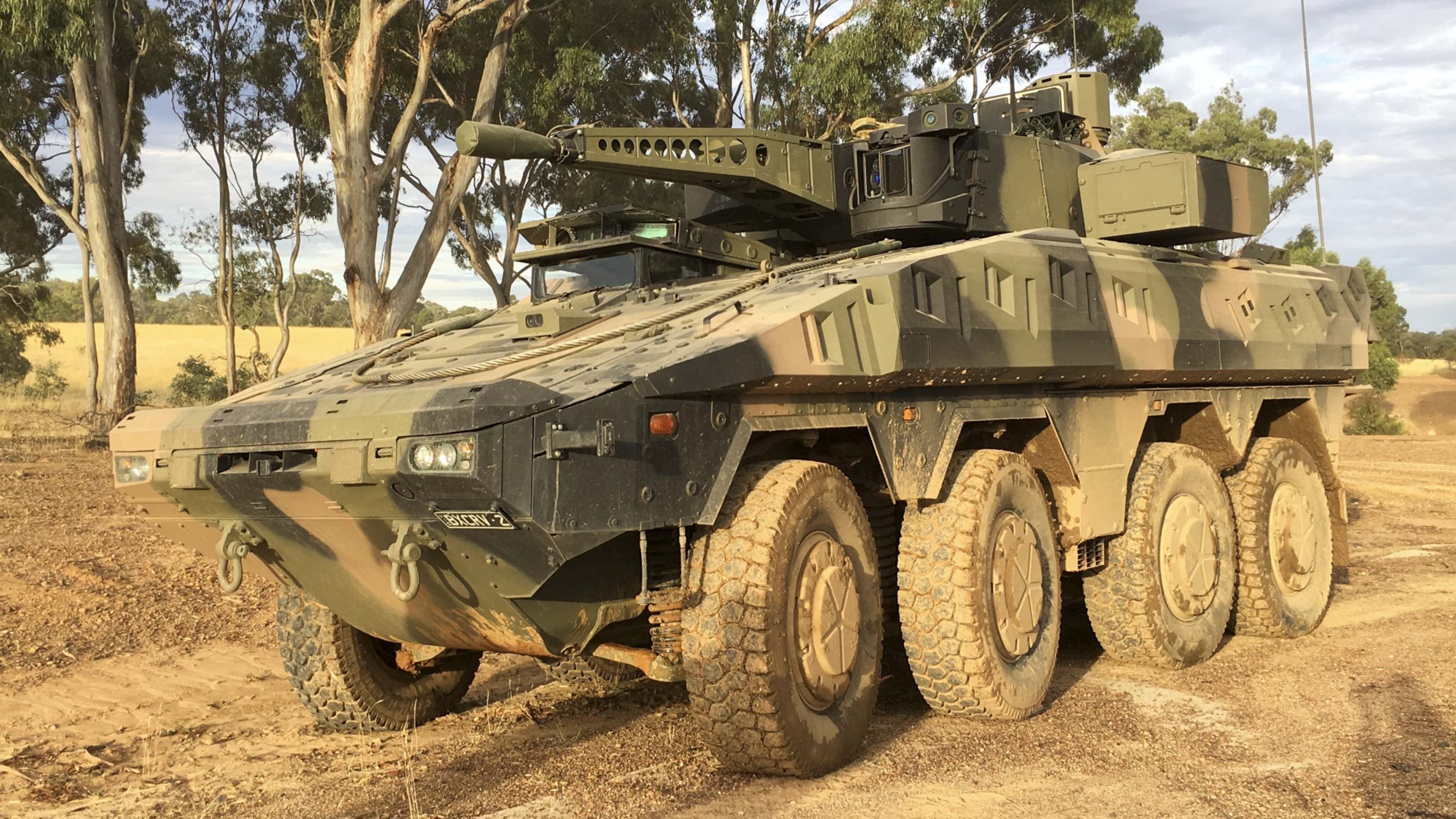
Boxer CRV
The Boxer platform has an interesting history reaching all the way back into the early 1990s when France, Germany and the United Kingdom decided to launch a joint wheeled modular platform project. Back then, modularity was a cutting-edge concept and despite the lack of funding for military projects and all the end of the Cold War budget cuts, they all thought they had something in there.
The beginning looked like it would end up as usual. The project was launched in 1993 by France and Germany (Great Britain joined in 1996) but by 1999 France already broke off and did its own thing (which would end up with the VBCI). This is usually the point where the Germans and the British get into additional arguments, scrap the project after multiple billions spent and buy American.
But it wasn’t like that in this case because there was really something to be had. For one, the project was managed competently by the Germans, specifically a company called ARTEC. There was an EU supervision panel but ARTEC was apparently in charge. Being controlled by both KMW and Rheinmetall comes with a lot of perks, including a huge lobbying pull.

Boxer prototype, 2003
The Netherlands joined the project in 2001 and a year later, the first two demonstrators were ready. By that time, the project had many names, different for each country:
- GTK for Germany (Gepanzertes Transport-Kraftfahrzeug)
- PSW for the Netherlands (Pantserwielvoertuig)
- MRAV for the UK (Multi-Role Armoured Vehicle)
The name Boxer appeared around 2002. Where exactly it came from is not quite clear but it was adopted and is currently used pretty much universally. The original idea was to order 200 vehicles for each of the participating countries. The United Kingdom, however, withdrew from the program in 2003 (it would rejoin the program 15 years later, but we’ll get to that). The Netherlands ordered 200 vehicles in 2006 to replace the old M113 variants such as the YPR-765 while Germany ordered 272 vehicles in 2006 to replace the old M113s and Fuchs AFVs (not the Marder). The initial production was scheduled to launch in 2004 but it was delayed until 2009 (the five years in-between were used for additional rigorous testing).

Drive Module
As technology goes, the Boxer is pretty much cutting edge even today, three decades after the project launch. The platform consists of two parts:
- Drive module (universal for all configurations)
- Mission module (different for each configuration)
The Mission module can be replaced very quickly using a crane. Whether this is actually a useful feature is another matter but it potentially allows the users to receive specialized variants (if needed) very quickly or to upgrade APCs to IFVs on short notice (providing the appropriate modules are available).
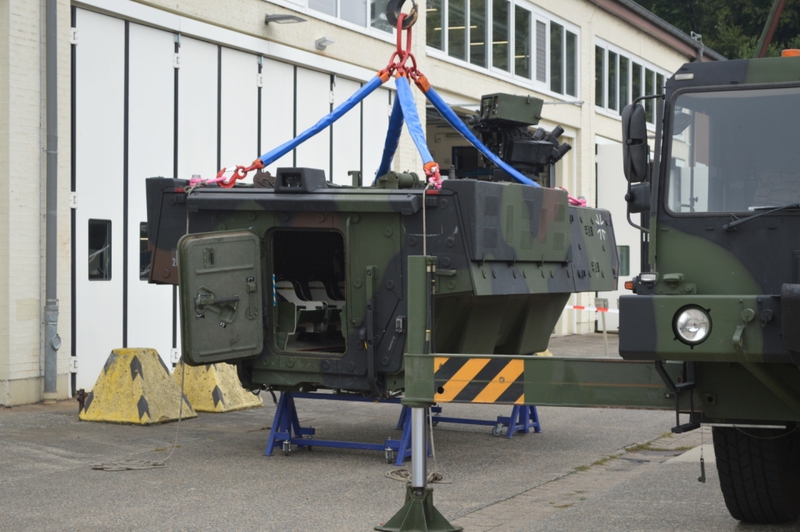
Mission Module
Both modules offer roughly the same protection (plus the option to mount extra composite armor on the basic steel hull). The baseline armor is said to be STANAG 4569 Level 4 all around, which means that the vehicle can withstand 14.5mm heavy machinegun bullets from any angle. The additional armor kit (AMAP-B) brings its frontal resistance up to Level 6, making the vehicle frontally resistant to 30mm autocannon rounds. Additional defensive measures include various systems that we’ll get to later.
The IFV version weighs some 38 tons, has a crew of 3 and is armed with a turret somewhat similar (but not identical to) the Puma IFV, featuring 30mm autocannon and a missile launcher. It is powered by a 15.9 liter MTU 8V 199 TE21 8-cylinder diesel producing some 816hp, allowing the vehicle to go as fast as 103 km/h (typical off-road speed being 40-45 km/h).
There are several sub-types of the platform, from the oldest A0 to the newest A3. They basically represent separate production runs and have only relatively minor differences, including additional protection. Most of the Boxers built are of the A1 and A2 variants. All in all, the Boxer is a very solid platform and it has seen a lot of market success (especially compared to the Puma).
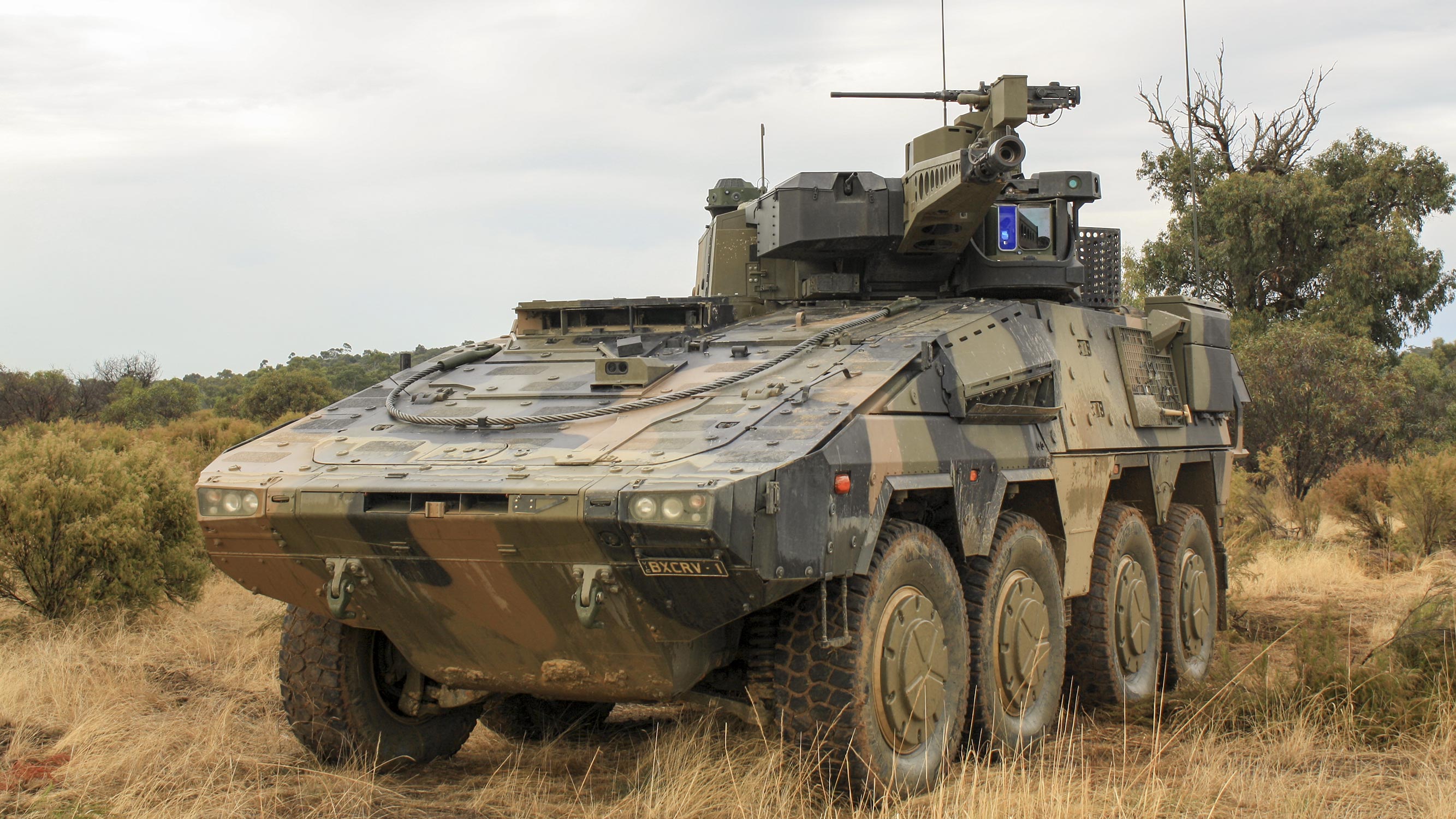
Boxer CRV
Three facilities producing the Boxed had been established – two in Germany and one in the Netherlands. In total, more than 1600 vehicles have been built so far or are planned to be built, including:
- 531 for Germany
- 200 for the Netherlands
- 600 or more for the United Kingdom
- 211 for Australia
- 91 for Lithuania
The contracts are ongoing but it is the Australian contract that’s most interesting because our Boxer is based on the Australian version.
The Australian Boxer won the contract for the LAND 400 Phase 2 program that sought to replace the aging ASLAV vehicles (MOWAG Piranha III variant for Australia) that have been in service since the early 1990s. The LAND 400 program has been in work since the mid-2000s – the initial Request for Information was issued in 2006 with another, more detailed one following in 2009. The program included several phases:
- Phase 1 was the initial 2006-2009 market evaluation
- Phase 2 was the acquisition of ASLAV replacement
- Phase 3 was the new IFV program (recently won by the Korean AS21 Redback)
Phase 2 was launched in the December of 2015. By the summer of 2016, two most likely to succeed candidates were selected – Rheinmetall with its Boxer and BAE with its Patria AMV version called AMV 35. Further evaluations took place between 2017 and 2018. The winner – Rheinmetall – was announced in the March of 2018. Simultaneously, the contract was reduced from the original 225 to 211 vehicles and signed in August of the same year (for 211 vehicles and 12 spare combat modules). The first 25 vehicles would be made in Germany, the rest in Australia. The contract would comprise of:
- 133 CRV vehicles (fire support and recon Boxers)
- 13 multi-purpose vehicles
- 15 command vehicles
- 29 JFS vehicles (basically lightly armed scouts)
- 10 recovery vehicles
- 11 repair vehicles
The vehicles are to be built until 2026 (the first ones were delivered in 2019).
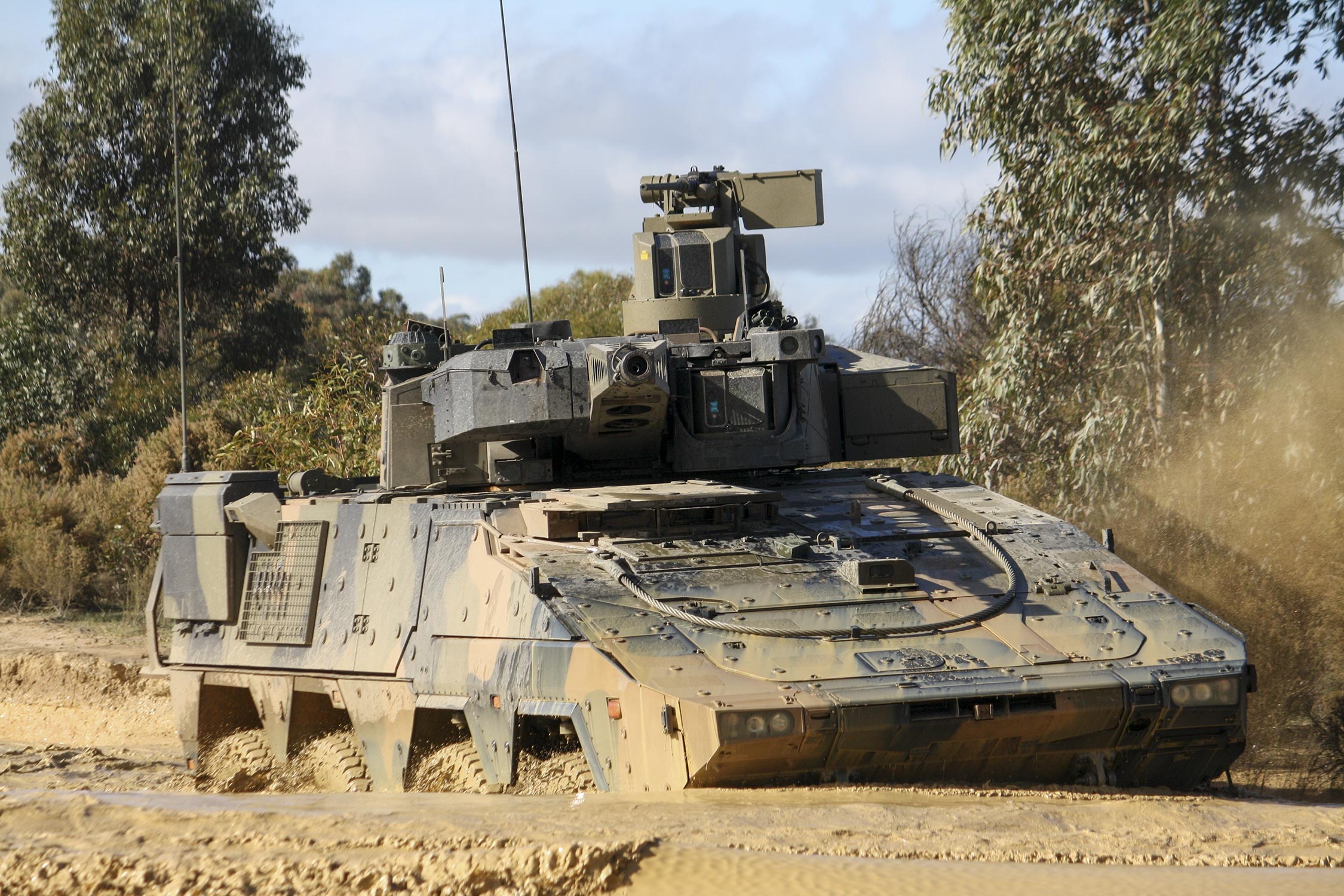
Boxer CRV
The CRV variant is intended for recon missions and combat, which is why it is armed to the teeth with the Rheinmetall Lance turret armed with 30mm Mk.30/2 autocannon and a Spike ATGM launcher (in later versions). The initial version from 2016 did not feature additional protection (just the composite armor option) or the missile launcher.
The gun can depress to -10 degrees and elevate to +45 degrees and can fire 200 rounds per minute (including programmable ones) although the rate of fire is variable and can reach up to 600 rounds per minute. The turret also features the C4ISR Battlefield Management System by Northrop Grumman. Additional, optional defensive measures of the CRV include the ROSY Soft-Kill APS and the StrikeShield hard-kill APS.
In Armored Warfare, the Boxer will be a Tier 9 Premium Armored Fighting Vehicle.
As was mentioned above, it’ll be a reward for reaching Level 20 of the Exile Battle Path. Concept-wise, it’s similar to Puma – a solid infantry carrier and fire support vehicle with some interesting features and good protection.
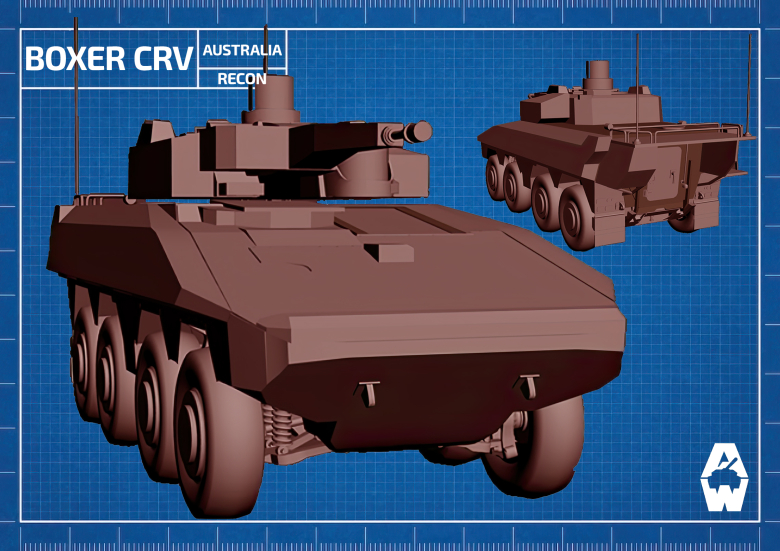
Click the image to open a larger version
What makes it Tier 9 and not Tier 10 is the fact that the Puma is a bit more high-tech than the Boxer, is more protected and is a heavier, tracked vehicle overall. The Boxer, on the other hand, will offer more burst firepower than the Puma, which will make it more suitable for PvP.
But first things first. Let’s start with the armor. Aside from the usual frontal protection from autocannon shells, the Boxer CRV will feature two additional systems:
- ROSY soft-kill APS
- StrikeShield protection system
We intentionally are not saying anything about StrikeShield APS because it’s not really an APS in the game. From the game perspective, StrikeShield is more similar to ERA than anything else. The reason for that is that unlike typical hard-kill APS (like the Trophy) that consists of a series of sensors and a rotating launcher that lobs some projectile at an incoming missile, the StrikeShield (like its AMAP ADS predecessor – it’s basically the same system) consists of static segments, each with its own sensor set. In addition, these act as additional armor as each comes with a steel plate. The outer layer can withstand 7.62mm AP bullets while the inner layer (behind the sensor suite and charges) can withstand 14.5mm bullets on its own.

StrikeShield APS
When designing this system in Armored Warfare, we had to look at some aspects of how the APS in the game works. On one hand, we have some similar static systems in the game. On the other hand, they don’t work really well and are implemented unrealistically. The two solutions that come immediately to mind are:
- A single comprehensive system that detonates each module depending on the direction the incoming projectile is arriving from
- Or each element should be its own separate APS working in a narrow angle
The first solution is incredibly hard to implement as it would require a total APS overhaul. For such a unique system that cannot be used anywhere else (at least for the time being), this is a massive resource sink that would delay other things. Not worth it.
The second solution is more interesting and logical but it has two major issues. First is some unintended behavior. The modules are placed so that if you fire at the front of the vehicle, the frontal module “catches” the missile and explodes. But if you fire alongside it, you make the side modules explode. It’s hard to describe but it looks incredibly uncanny. The second – and perhaps more important – issue is that for this to work, you have to have a separate APS module for each segment and it breaks the UI really badly. Again, no good solution to this issue.
In the end, we decided to implement the StrikeShield combat modules as ERA with multiple charges (in addition to the extra armor they provide). We’re still working on the mechanic so we don’t have more to share right now – but the side armor of the vehicle will be durable and the Boxer will also feature effective soft-kill APS.

Boxer CRV
Next, the firepower. Once again, we’ll have a combination of 30mm autocannon and a Spike launcher with two launch tubes. The autocannon is similar to the one used by Lynx Skyranger and will also use similar ammunition (APFSDS and PELE). The autocannon will have a limited magazine and the overheat mechanic as well as a rather high rate of fire. In addition, the missile launcher (tandem HEAT missiles, the usual) will have the option to launch two missiles at once (it’ll have to be unlocked via Battle Path progression).
When it comes to mobility, the vehicle will be fairly slow and sluggish. On the bright side, it’ll make it easier to control. The Boxer will also carry Mechanized Infantry – quite possibly larger squads than usual (6 AT troops, 3 mortar crews or 2 snipers).
And that’s pretty much it. The Boxer will be more a wheeled tank than a scout, with a lot of firepower to boot. We hope you’ll enjoy it and are looking forward to telling you more about the final vehicle of the Battle Path.
See you on the battlefield!








